Mekong: "Khong, The mother of water"
Leaving the Thai border town Chiang Khong, we took
our hotel's packed lunch (hamburger, chips and noodles) for the longboat
trip on the Mekong and boarded a bus at Thai customs. Today's is a much
shorter trip across the Mekong to Huay Xai thanks to the new bridge that
replaced the boat crossing of a few years back. We paid for our Visa at
customs - US$42 - and converted bahts to kips currency. Entering Lao, Beam
introduced us to the local guide, Mr. Thong and we boarded a Songthaew
truck for the 30-minute ride through fields and towns to the slowboat pier.
The Mekong river is the longest in Southeast Asia
and is the lifeblood of a huge area. It is a vital source of transportation
and water to the rice fields before reaching its final destination on the
south east coast of Vietnam, where it becomes a sprawling delta, home to
17.5 million people. We were told that Thailand was on one side of the
river and Lao on other - but since French Colonial days the river itself
belongs to Lao. Thailand is restricted from putting landfill into the river,
so they often dig into the banks to make level land for agriculture, buildings
and docks.
We boarded our long, narrow boat which was lined
with seats and tables on either side of a centre aisle. There were curtained
windows along both sides. Just behind the pilots' steering area at the
front was an open-ceiling sunroom in which were piled a stack of life jackets.
Near the rear was the engine room, toilets and a small bar area selling
noodles, snacks, and drinks. The family living quarters were at the rear
of the boat. As with many longboats there was a satellite dish antennae
on the cabin roof. Our toilets were shared with the family and crew members
who lived on the boat.
The brown muddy waters of the Mekong were in contrast
to the lush green vegetation on the surrounding hills, cliffs and mountains
that rose abruptly from the shoreline. The trip was generally quiet and
relaxing and we spent much of our time chatting, writing, reading and taking
photos of the scenery that unfolded on either side of the boat. Occasionally
we would see locals strolling or working on the shore, fishermen tending
their nets, small settlements, the odd school, stands of teak trees, etc.
We
passed many young children swimming or playing by the waters edge, locals
thrashing rice, washing clothes, and taking baths. There were many kids
at play because New Year school holidays had begun. Many of the villages
were accessible only by river and were without electricity.
Apocalypse Non: When we first planned
this Mekong adventure we had visions of Coppola's Vietnam War film,
Apocalypse
Now "the smell of napalm in the morning" and every kilometre of
the river fraught with danger (read
the script). But that was a different time and that river was really
the Nung flowing into Cambodia - and the filming was actually done in the
Philippines. Our river adventure was a bit safer :) . . . although while
the Mekong is generally quite wide, there are some narrow stretches with
faster flowing water and numerous whirlpools and rocky outcrops. In fact,
the day after we completed our trip, another longboat ran into trouble
in a whirlpool and was smashed in two by the rocks. Occupants either swam
to shore or clung to the rocks and wreckage until they were rescued by
passing boats. One woman, a BBC journalist however, was lost in the current
and her body was found later downstream.
Occasionally, we would meet or pass other craft:
local boats, other longboats and the speeding fastboats. These speedboats
travel at a high speed and have a poorer safety record. Our captain was
careful to avoid the numerous rock outcrops, but the water was mostly smooth
with the odd treacherous rapid and whirpool. Current construction projects
are creating bridges and dams across the river - many of them made possible
by Chinese investment.
This was the time of year when local farmers practiced
slash and burn on the hillsides in preparation for the new planting season.
The villagers are allowed to clear land in early spring. They cut down
the trees, collect whatever ones are usable for lumber, etc., and leave
the rest to dry. In April, they can burn whatever is left, and only in
April. The land is then worked up, mostly into terraces, and is ready
for planting and the monsoons around the end of June. It's amazing how
they can work on such steep hills, but they do so successfully. There were
so many fires that a permanent haze covered much of the region, there were
sections that were engulfed in heavy smoke and ash and we could hear the
crackling of the flames.
Bamboo poles were jammed into rock crevices at
various angles, securing nets just below the surface to strain fish from
the fast currents. Floating plastic bottles functioned as buoys marking
off territory and drift net locations. Bamboo sticks lined the shore, each
one holding a small fish trap or baited hook. This was the dry season,
so there were many sand bars and moist banks. We could see previous higher
water level marks on some of the cliff walls. The banks were planted in
corn and green beans, with peanuts planted on the sand bars. We also saw
herds of grazing cattle and the occasional elephant - but very few birds.
After about seven hours we approached Pakbeng
- the half-way stop for river traffic between Huay Xai and Luang Prabang.


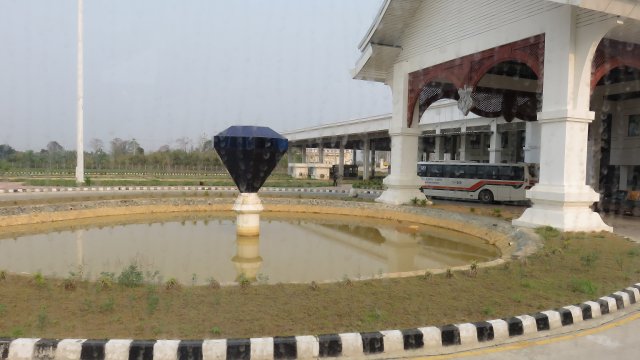
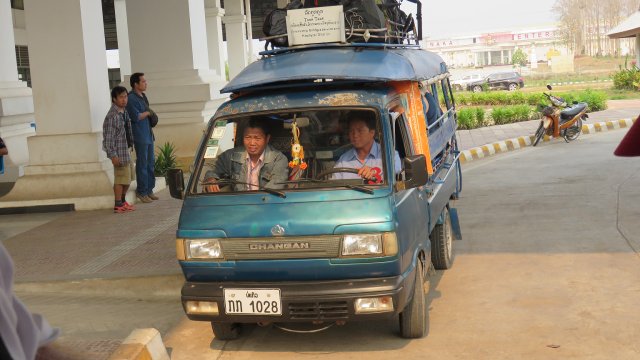
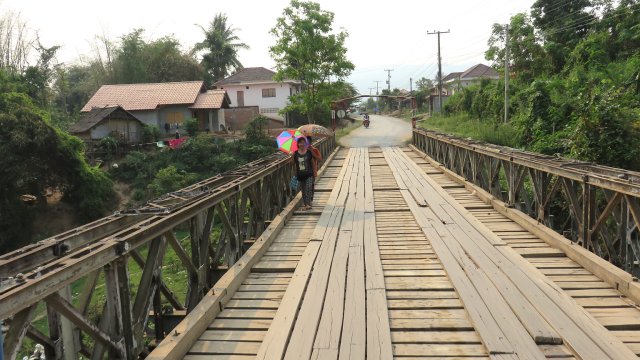
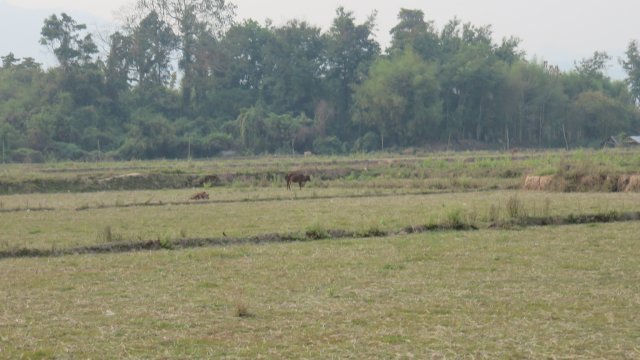
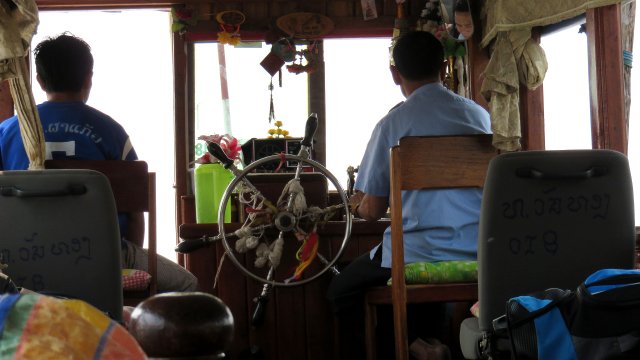
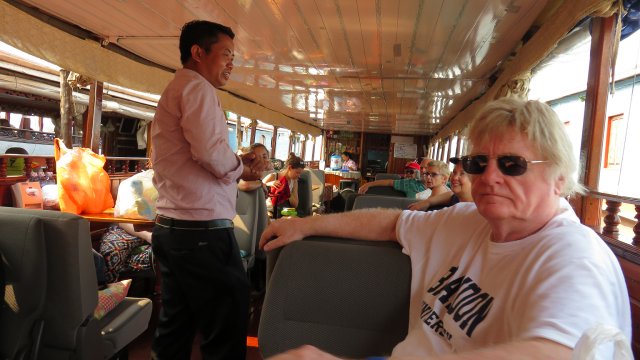
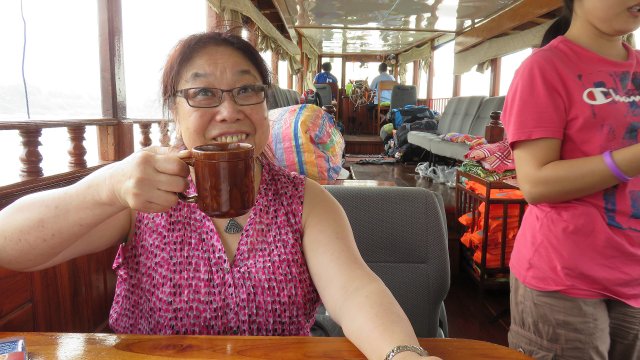
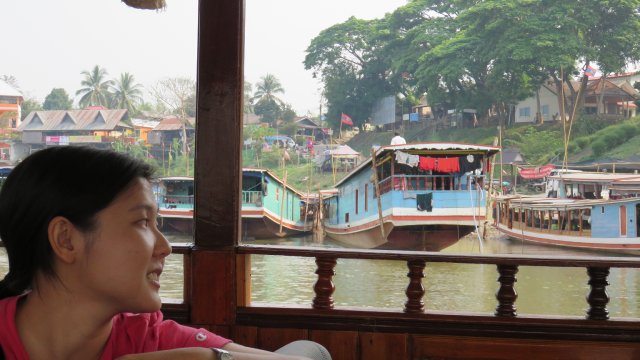
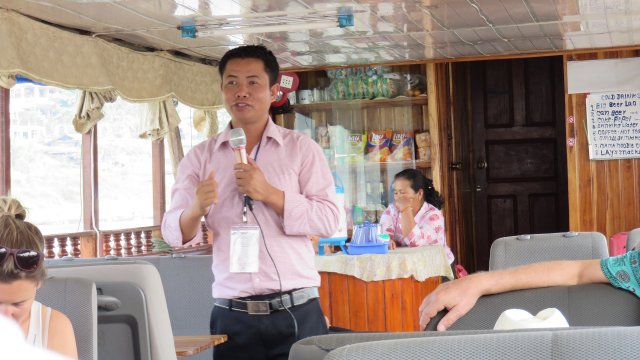
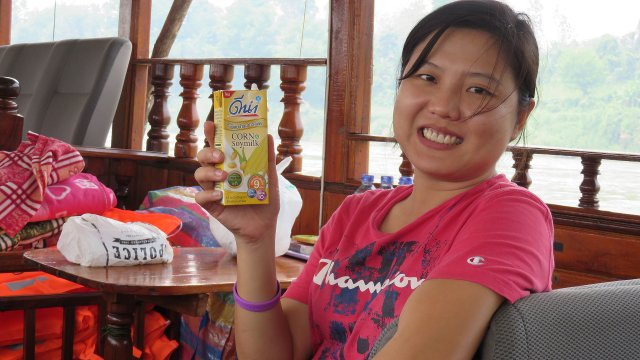
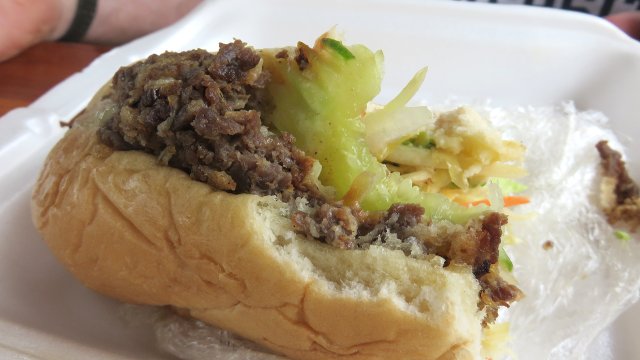
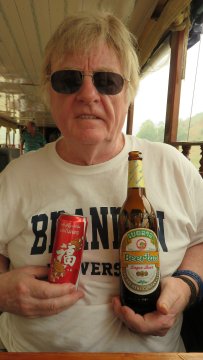
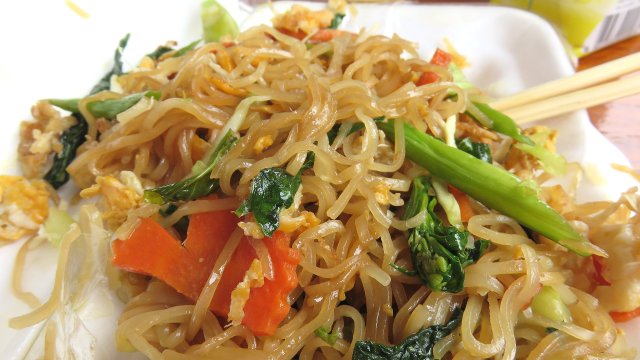
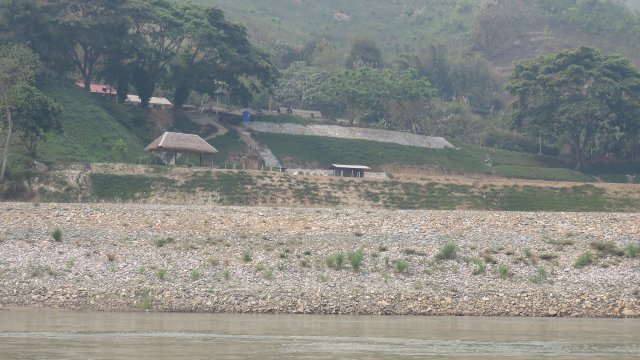
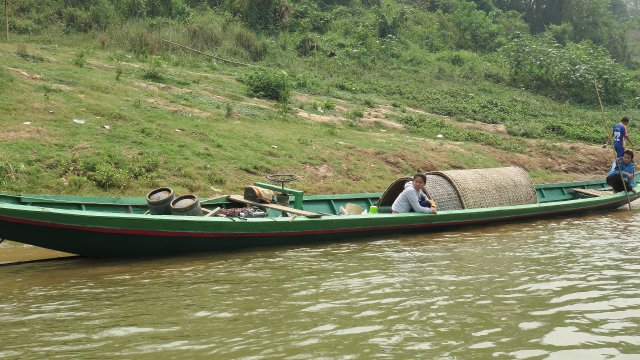
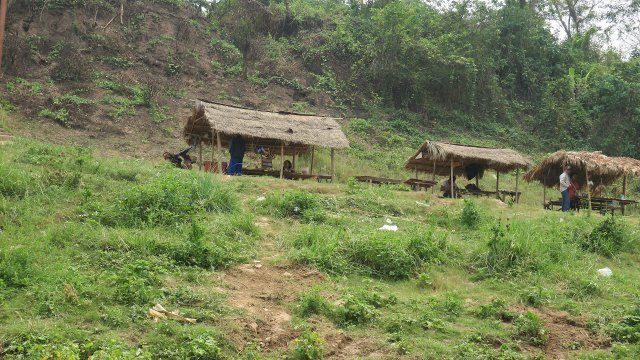
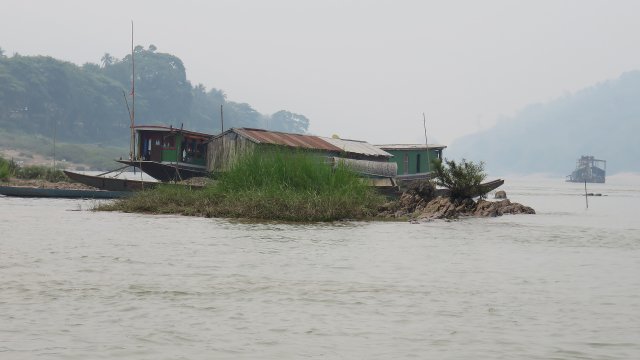
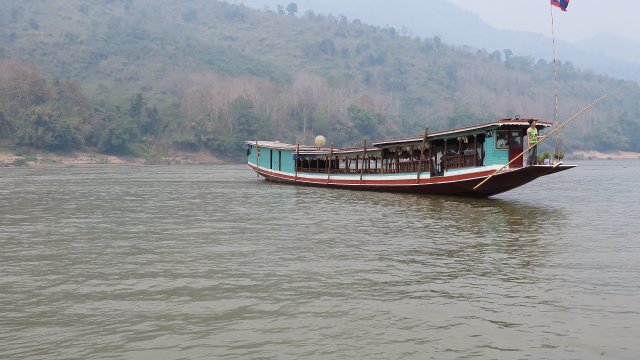
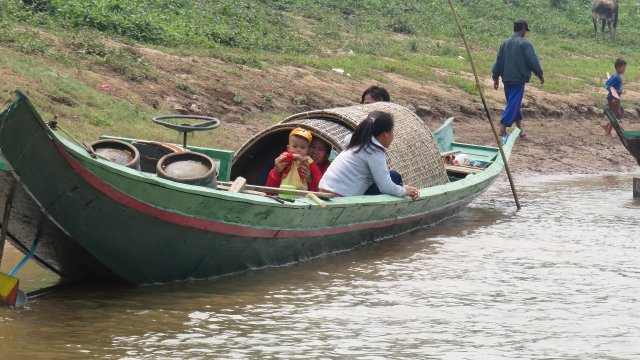
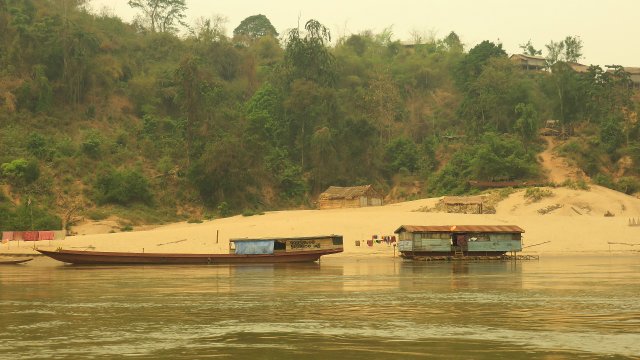
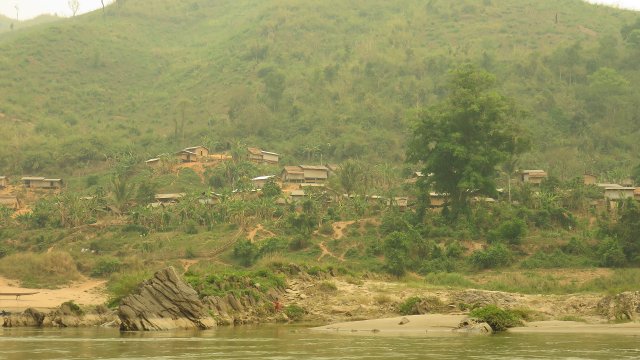
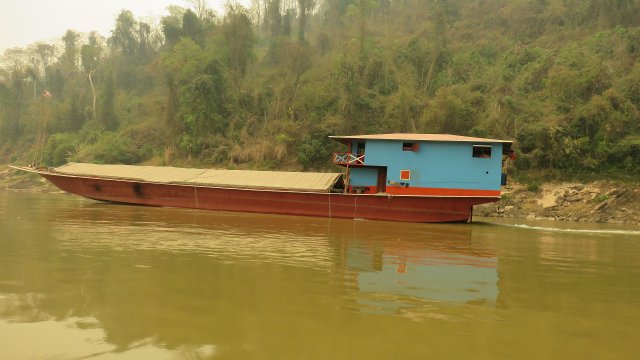
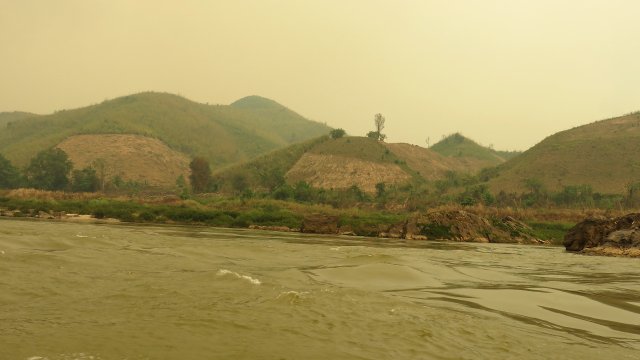
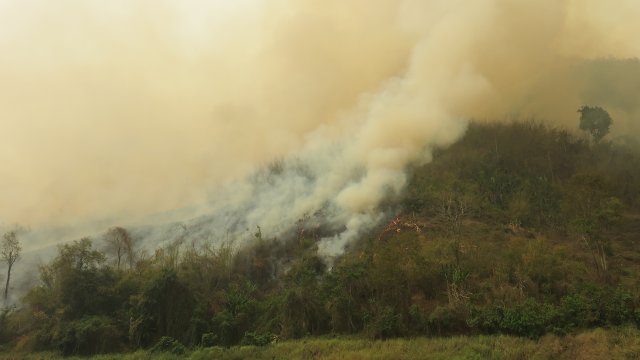
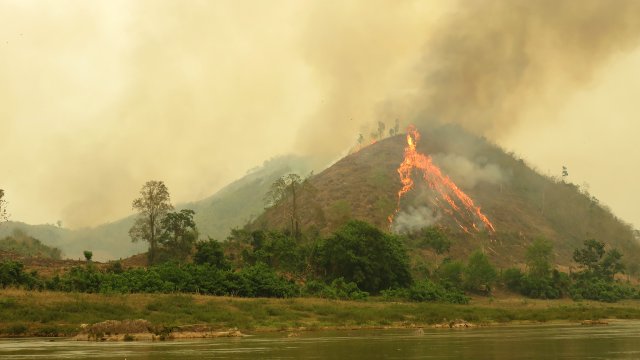
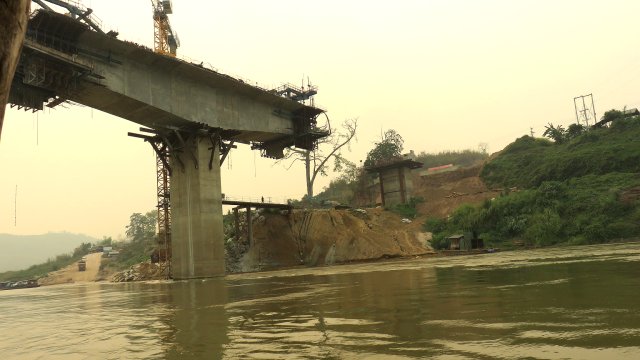
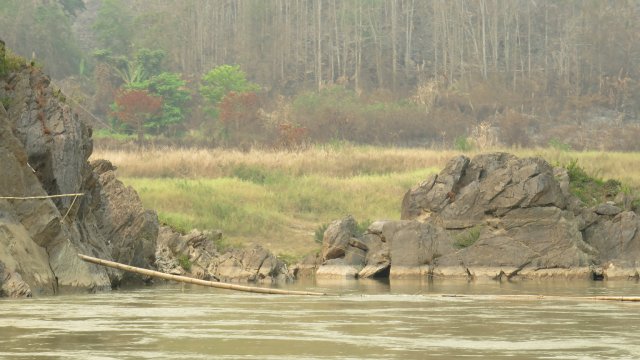
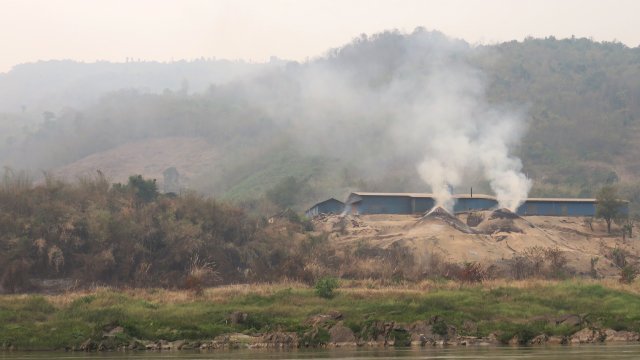
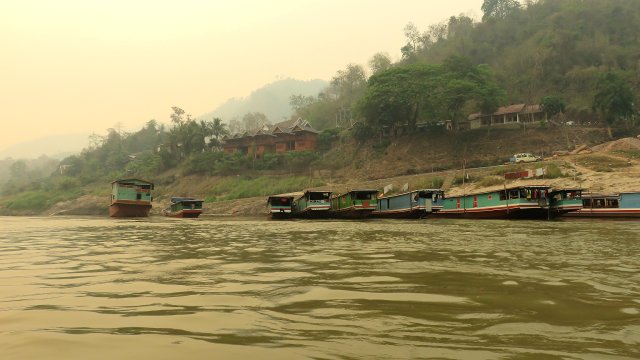
![]()
![]()
![]()
![]()